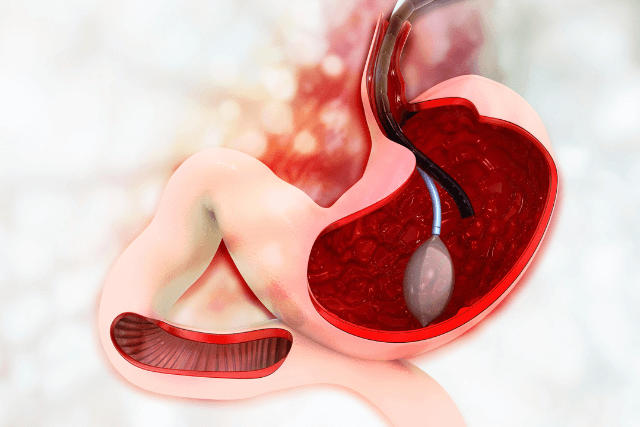Gastric balloons for weight loss are becoming an increasingly popular non-surgical option for individuals struggling with obesity. These balloons, inserted into the stomach to reduce food intake, offer a temporary and effective solution for weight management. Among the many types of gastric balloons available today, Orbera and Spatz stand out as two leading choices. But how do these two weight loss options compare?
In this blog, we will delve into the differences, benefits, and potential drawbacks of the Orbera and Spatz gastric balloons. By the end of this post, you’ll have a clear understanding of which gastric balloon might be the right fit for your weight loss journey.
What Are Gastric Balloons for Weight Loss?
Before comparing Orbera and Spatz, it’s essential to understand what gastric balloons are and how they work. A gastric balloon is a non-surgical weight loss procedure that involves placing a soft, expandable balloon inside the stomach. The balloon takes up space in the stomach, limiting how much food you can eat and helping you feel full faster.
Typically, gastric balloons help individuals who are of very high weight or have struggled with traditional weight loss methods. This option is considered when a patient isn’t ready for invasive procedures like gastric bypass but needs weight loss help.
Orbera Gastric Balloon: Key Features and Benefits
The Orbera Gastric Balloon is one of the most widely known and used options for weight loss. It’s a single, non-adjustable balloon inserted into the stomach through the mouth via an endoscope with a camera. The balloon is then filled with saline to occupy space in the stomach.
Key Features of the Orbera Gastric Balloon
- Duration: Doctors typically use the Orbera balloon for six months. After this period, they remove it from the stomach, as the device isn’t designed to remain long-term.
- Weight Loss Potential: Most patients using the Orbera balloon can expect to lose about 20-30% of their excess weight within six months.
- Non-Surgical: Unlike gastric bypass or other surgical options, the Orbera balloon is a non-invasive procedure, making it a less risky option for many patients.
- Simple Procedure: The balloon is placed through the mouth, meaning there are no incisions or stitches involved. Recovery time is typically short, and many patients can resume regular activities within a day or two.
Benefits of the Orbera Gastric Balloon
- Effective for Short-Term Weight Loss: The Orbera balloon provides significant weight loss within six months, helping patients lose weight quickly and safely.
- Fewer Side Effects: Since it’s a non-surgical procedure, the risk of complications is lower than with traditional weight loss surgeries.
- Improved Health: Many patients experience significant improvements in health conditions such as hypertension, diabetes, and high cholesterol after using the Orbera balloon.

Spatz Gastric Balloon: Key Features and Benefits
The Spatz Gastric Balloon is another popular option, but it differs from Orbera in several significant ways. Like the Orbera balloon, the Spatz balloon is inserted into the stomach via endoscopy. However, the key difference lies in its adjustability.
Key Features of the Spatz Gastric Balloon
- Adjustability: One of the standout features of the Spatz gastric balloon is that it is adjustable. This means the doctor can increase or decrease the amount of saline inside the balloon during follow-up visits, tailoring it to meet the patient’s changing needs.
- Longer Duration: Unlike the Orbera balloon, which remains in the stomach for six months, the Spatz balloon can stay in the stomach for up to 12 months, providing longer-lasting support for weight loss.
- Weight Loss Potential: The Spatz balloon is designed to offer gradual, sustainable weight loss. It typically helps patients lose 20-40% of their excess weight over the course of one year.
- Less Restrictive: Due to the balloon’s adjustable nature, it offers more flexibility in terms of comfort. Patients can experience a personalized weight loss journey without the rigid constraints of a non-adjustable balloon.
Benefits of the Spatz Gastric Balloon
- Adjustability: The ability to adjust the balloon’s size allows for more customization. As patients lose weight and their stomach shrinks, doctors can deflate the balloon to maintain treatment effectiveness and comfort.
- Longer Duration: The Spatz balloon stays in place for up to 12 months, providing more extended support than other balloons, which can be especially beneficial for patients who need a longer time to reach their weight loss goals.
- Higher Success Rate for Long-Term Weight Loss: Because doctors use the Spatz balloon for a longer duration and adjust it to suit the patient’s progress, it offers a more gradual, sustainable approach to weight loss.
Orbera vs Spatz: Key Differences
1. Adjustability
One of the primary differences between the Orbera and Spatz gastric balloons is adjustability. The doctor fixes the Orbera balloon once they place it, meaning they cannot alter its size during the treatment period. On the other hand, the Spatz balloon is adjustable, allowing for changes in the balloon’s size throughout the treatment. This flexibility means that doctors can tailor the Spatz balloon to each patient’s unique needs, making it a more customizable solution.
2. Duration
While both balloons help with weight loss, the duration they remain in the stomach differs. The doctor leaves the Orbera balloon in the stomach for six months, while the Spatz balloon stays in place for up to 12 months. This extended duration makes Spatz a better choice for patients who need more time to achieve their weight loss goals.
3. Effectiveness
Both balloons are effective, but the effectiveness of each device varies based on individual circumstances. Doctors design the Spatz balloon for more gradual, sustained weight loss over a longer period, while Orbera helps patients achieve more rapid weight loss within the first six months. Depending on the patient’s weight loss goals, one balloon may be more suitable than the other.
4. Procedure and Removal
Doctors insert both Orbera and Spatz balloons via endoscopy, making them non-surgical procedures. The duration of balloon use may slightly change the removal process. Doctors remove Orbera after six months, but they can leave the Spatz balloon for up to 12 months. Regardless of the balloon type, both procedures are relatively simple, with minimal downtime for recovery.
Which Gastric Balloon Is Right for You?
Choosing between the Orbera and Spatz gastric balloons depends largely on your individual needs, weight loss goals, and medical history. Here are some factors to consider when making your decision:
- Weight Loss Goals: If you need rapid weight loss, Orbera may be the right option since it offers quicker results within six months. However, if you’re looking for a more gradual and sustained approach, the Spatz balloon may be the better choice due to its adjustable nature and extended duration.
- Duration of Treatment: If you prefer a longer-term solution, the Spatz balloon’s ability to remain in the stomach for up to 12 months offers more support. On the other hand, the Orbera balloon may be better if you’re looking for a shorter, more immediate weight loss solution.
- Customization: If you think you’ll benefit from the ability to adjust the balloon size as you lose weight, the Spatz balloon’s adjustable feature could be advantageous.
Conclusion: Gastric Balloons for Weight Loss
In conclusion, both Orbera and Spatz gastric balloons offer effective, non-surgical solutions for weight loss. Orbera is ideal for short-term weight loss, while the Spatz balloon offers adjustable, long-term, and flexible weight loss.
Ultimately, the best choice depends on your unique needs, preferences, and weight loss goals. Regardless of the balloon you choose, both options require lifestyle changes, including a healthy diet and exercise, for lasting results.
Before deciding, consult with a healthcare professional to ensure you choose the right weight loss solution for you.










